Isang--mag-aaral - Sunny










More Posts from Isang--mag-aaral and Others
![Korean Mythology [pt. 1]](https://64.media.tumblr.com/5a6d5027a0dc390929a48ecae5051ff3/8279e19911e918a4-6b/s500x750/5fecfcf0c16b1c2dc3dcc93bc8d2e9c590d7c14d.jpg)
Korean Mythology [pt. 1]
안녕하세요! This post was requested by lunax02, who suggested that I talk about Korean Mythological Creatures as a way to incorporate more Korean culture into my blog! This ask is brilliant and I appreciate all requests made to me (especially if you guys are super interested in it)! In order to tell you about Mythological Creatures in Korea, you first need to know where they come from! This is crucial for understanding their history and why they are an important part of Korean culture!
This is also very exciting to me as this post (and future Korean Mythology posts) will be a collab with my friend / mutual, @patrooocle! Dare I say, the queen of giving us Korean culture blogs. She has been so kind as to share her notes and help me through this process, so if you don’t follow her already please please do!
patrooocle’s blog // patrooocle’s twitter // patrooocle’s IG
WARNING: This post will be very long!
*for this post, I will be using some Hanja ( 한자 // 漢字 ), anything written by me is open to criticism as I am still learning how to make it more natural and the correct stroke order and would love all the help I can get
I am using Hanja as a way to incorporate a deeper understanding of the Korean characters and their origins! It is a way to break down the literal meaning of the Korean words so we can have a better understanding of their history!
Keep reading





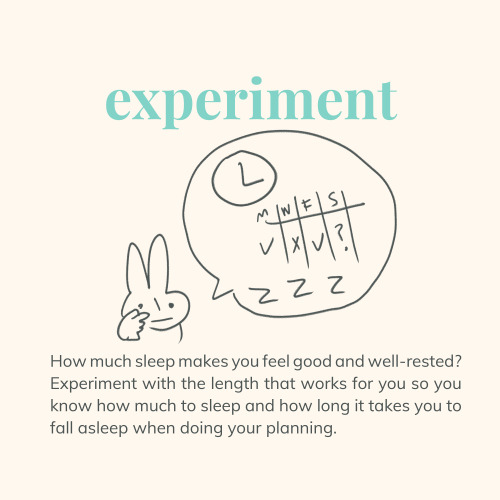


last year i used to sleep from 5 am to 10 am every day and it was Not Good for me. i’ve gotten a couple of questions about my sleep schedule so i thought i’d share some tips that helped me adopt a healthier sleep schedule. enjoy 🛏💤
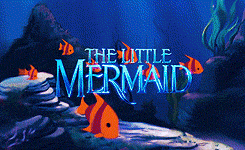
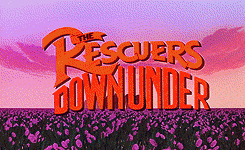

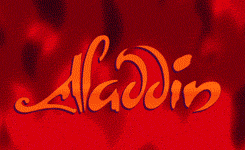
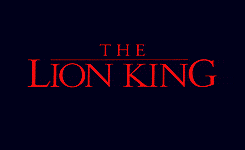
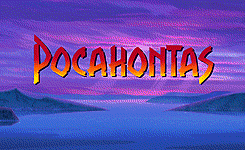
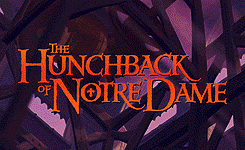
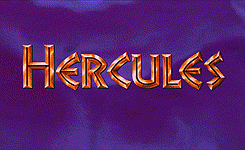
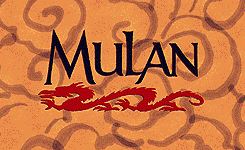
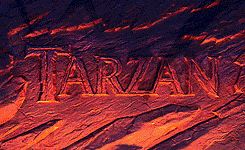

…you’re lucky I’m a stubborn asshole because these took way longer to make than I’d like to admit.
Why are pretty pens so expensive?
how I keep myself sane during summer break.
I think we can all agree that the mere idea of having holiday breaks from boring lectures and all-nighter study sessions sounds like heaven; although this romanticized idea of having so much free time often turns into wasted summer days, oversleeping, and basically an anti-social teenage version of house arrest. so, to help you out (or, more to help Myself) here are some things I do to keep myself busy, on a budget (kind of), and mentally healthy during long breaks from school.
continue your morning routine. this is important; by this I mean to basically treat your summer mornings as you would your school mornings, without the rush and alarm. brush your teeth, brush your hair, start/continue a skincare routine, get out of your pajamas and into real clothes, make your bed, make some coffee, eat some breakfast, do it with some music on, whatever you want. this keeps your mind and body into a daily routine. don’t let all your precious no-class mornings of summer go to waste!
savor sleeping in, but not too much. I know its super tempting to go to bed at like 2 AM and wake up the next “morning” at 12PM, but trust me, you’ll regret fucking up your sleep schedule once you actually have to set an alarm and get your ass to class next fall. I’m not saying you should force yourself to set a summer alarm (although, if you really want to train yourself this isn’t a bad idea tbh) but for the love of god, at least go to sleep and wake up at reasonable times. don’t waste your entire day!!
force yourself to see your friends a couple times a week, even if you really don’t want to. obviously this excludes mental health days, but I’ve found that spending time with my friends actually distracts me from any anxiety I’ve felt during the past week. I love my alone time, but human interaction is super important both mentally and physically. as college students we’re all pretty much broke, so don’t underestimate the power of free things- watching netflix at someone’s house, having a boardgame night, going to parks, you name it. as long as you’re with your friends, you’ll have a great time!
clean out your music library + make a playlist or two. y’all know I love a good playlist. this is something totally 100% FREE, and a perfect way to make use of your free time. delete all the stuff you don’t listen to anymore and make a few playlists of your favorite songs, or even go with playlist themes to organize your songs. it’s fun and your future self will probably thank you later for getting rid of so much audible junk.
get back into reading. this is something that was on my personal summer to-do list. I haven’t read a book for myself (aka not for a class) in sooo long, and let me tell you- I don’t know why I ever stopped reading. I know for a fact that once the semester starts I’ll have zero free time to read for myself, so summer is the perfect time to get into a new book or two!
eat your three meals a day +hydrate. I mean this. its very easy to skip/forget meals when you really don’t have any set schedule whatsoever, so plan your meals into your day. even make an alarm if its necessary. also: if you don’t know if you’re drinking enough water, you probably aren’t.
deep clean your room/workspace/closet. I’m super guilty for putting this off but, long breaks like summer are the perfect times to deep clean! what makes it easier for me to clean my room is to go section by section, which means not doing it all in a day (because that gets hella overwhelming and stressful, let me tell you). grab a garbage bag, put on some tunes, and pick a section to clean that day; you’ll be done with the entire space in no time!
outfit plan. for someone like me who has way too much in my closet and somehow still “never has anything to wear”, this is essential! set some outfits out on the floor/bed and take pics of them on your phone so that you can look back on them for some style inspo the next time you have “absolutely NOTHING to wear”.
find a new hobby, even if you’re bad at it. make some collages of your friends, make a scrapbook, learn photoshop, paint a little, learn how to sew, garden, cook, practice your phone photography skills… if there was a time for you to try out new things, it’s NOW.
make a post about all the shit you should do. I’m doing it right now. literally. you’re reading it right now. its not a bad idea.
if you know you have shit to do, plan it into your day! this is where the planner/agenda/bullet journal aspect comes in. having no class and no homework is not an excuse to stop planning out your day, your week, or your month. make some task lists and pencil in your dentist appointments and dates with people and whatnot; and even journal your days while you’re at it! if you’re a planner, never stop. Future You will thank you for it, I promise.










map of the soul










Getting Started with Graphic Design
I started getting into graphic design because I wanted to present my blog posts in a more visually appealing way and provide more content such as wallpapers and printables. Since then, I’ve been able to enhance my design skills by designing for different events as well as working as a designer for campus organizations.
So, I wanted to share a few tips on how you can get started designing things on your own. Here are some of the things I did when I was starting out. Hope they help!
Read on for text format + additional information.
Keep reading

HOW TO WRITE A HIGH-GRADE RESEARCH PAPER
~~~~~~~~~~~~~~~~~~~~~~~~~~~~~~~~~~~~~~~~~~
The first time I had to write a research paper for university was one of the most stressful experiences I’d ever had - it was so different to anything I’d ever done before and caused me so much anxiety! It turned out that I’m pretty damn good at writing research reports and I’m now looking to pursue a career in psychological research.
I have never received less than a First (or 4.0 GPA for you American studiers) in my research papers so I thought I’d share my top tips on how to write a kick-ass, high-grade research paper.
*disclaimer: I am a psychology student, my tips are based on my personal experience of writing up psychological research (quantitative and qualitative); therefore, they may require some adaptation in order to be applied to your field of study/research*
These tips will be split up into the different sections a research paper should consist of: abstract, introduction, methods, results, discussion.
ABSTRACT
The aim of an abstract is to summarise your whole paper - it should be concise, include key-words, highlight the key points of your paper and be written last.
When I say concise, I mean concise! The abstract is what other students and researchers will read in order to decide whether your research is relevant their own work and essentially determines whether or not they’ll read on - they want to know the key details and don’t want to be overwhelmed with information.
I always aim to keep my abstracts under 250 words. I set myself this limit to stop myself waffling and dwelling on unimportant points, it helps me to be really selective of what I include and ensures I’m gripping the reader from the start.
Your abstract should discuss the research rationale, the methods and designs used, your results and the general conclusion(s) drawn. One or two sentences on each of these topics is enough.
Make sure you’re using key-words throughout your abstract as this will also help the reader decide whether your work is relevant to theirs. You can make key-words super obvious by highlighting them in a key at the bottom of your abstract (see below) or just used jargon consistently. Using key-words is also important if you’re looking to get your work published, these words will help people find your work using search engines.

Finally, write your abstract last! An abstract is a summary of your whole research paper which makes it practically impossible to write well first. After writing the rest of your paper, you will know your research inside and out and already have an idea of what key things you need to highlight in your abstract.
INTRODUCTION
For me, the introduction section is always the most intimidating to write because it’s like painting on a blank canvas - massively daunting and leaving you terrified to make a mistake!
The aim of an introduction is to provide the rationale for your research and justify why your work is essential in the field. In general, your introduction should start very broad and narrow down until you arrive at the niche that is your research question or hypothesis.
To start, you need to provide the reader with some background information and context. You should discuss the general principle of your paper and include some key pieces of research (or theoretical frameworks if relevant) that helps your reader get up to speed with the research field and where understanding currently lies. This section can be pretty lengthy, especially in psychological research, so make sure all of the information you’re including is vital as it can be pretty easy to get carried away.
This background should lead you onto the rationale. If you’ve never written a research paper before, the rationale is essentially the reason behind your own research. This could be building on previous findings so our understanding remains up to date, it could be picking up on weaknesses of other research and rectifying these issues or it could be delving into an unexplored aspect of the field! You should clearly state your rationale and this helps lead into the next section.
You should end your introduction by briefly discussing your current research. You need to state your research question or hypothesis, how you plan on investigating the question/hypothesis, the sample you plan on using and the analysis you plan to carry out. You should also mention any limitations you anticipate to crop up so you can address these in your discussion.
In psychology, references are huge in research introductions so it is important to use an accurate (and modern as possible) reference for each statement you are making. You can then use these same references in your discussion to show where your research fits into the current understanding of the topic!
METHODS
Your methods section should make use of subheadings and tables where necessary and should be written in past tense. This can make the (potentially) lengthy section easier to navigate for the reader. I usually use the following headings: participants, materials, design, procedure.
The participants section should describe the sample that took part in your research. Age, gender, nationality and other relevant demographic information should be provided as well as the sampling technique. Personally, I use a table (see below) alongside my continuous prose as an alternative way of viewing my sample population. Please note, if you’re using a table make sure it adheres to your university guidelines.

The materials section of your methods should include any equipment, resources (i.e. images, books, diagrams) or any other materials used in your data collection. You should also reference the program that helped you conduct your analysis. For example, if you are writing a qualitative research paper, you may want to include Microsoft Word in your materials if you use the program to transcribe interviews.
You should then describe the design used in your research. All variables should be identified in this paragraph, if relevant. You should also discuss whether your research is within-groups or between-groups, again only if relevant.
Last is your procedure section - the most important one! You must write this section with enough detail so that anybody could pick it up, read it and conduct the same experiment with ease. You should describe what participants were required to do, how data was collected and it should be written in chronological order! While it’s important to provide enough information, try not to overwhelm the reader with lengthy sentences and unnecessary information.
RESULTS
Your results section’s sole purpose is to provide the reader with the data from your study. It should be the second shortest section (abstract being first) in your research paper and should stick to the relevant guidelines in regards to reporting figures, tables and diagrams. Your goal is to relay results in the most objective and concise way possible.
Your results section serves to act as evidence for the claims you’ll go on to make during your discussion but you must not be biased in the results you report. You should report enough data to sufficiently justify your conclusions but must also include data that doesn’t support your original hypothesis or research question.
Reporting data is most easily done through tables and figures as they’re easy to look at and select relevant information. If you’re using tables and figures you should always make sure you’re stating effect sizes and p values and to a consistent decimal place. Illustrative tables and figures should always be followed by supporting summary text consisting of a couple of sentences relaying the key statistical findings in continuous prose.
DISCUSSION
The discussion section should take the opposite approach to your introduction! You should start discussing your own research and broaden the discussion until you’re talking about the general research field.
You should start by stating the major findings of your study and relating them back to your hypothesis or research questions. You must must must explicitly state whether you reject or accept your experimental hypothesis, if you have one. After stating your key findings you should explain the meaning, why they’re important and where they fit into the existing literature. It’s here that you should bring back the research you discussed in your introduction, you should relate your findings to the current understanding and state the new insight your research provides.
You should then state the clinical relevance of your research. Think about how your findings could be applied to real-life situations and discuss one or two practical applications.
After this, discuss the limitations of your research. Limitations could include sample size and general sample population and how this effects generalisability of findings, it could include methodological problems or research bias! These limitations will allow you to discuss how further research should be conducted. Suggest ways in which these limitations could be rectified in future research and also discuss the implications this could have on findings and conclusions drawn.
Finally, you need to give the reader a take-home message. A sentence or two to justify (again) the need for your research and how it contributes to current understanding in the field. This is the last thing your audience will read so make it punchy!
~~~~~~~~~~~~~~~~~~~~~~~~~~~~~~~~~~~~
That’s it folks! My tips for writing a kick-ass, high-grade research paper based on my personal experience. If you have any questions regarding things I’ve missed or didn’t provide enough detail of, then please just send me an ask!
Also, if any of you would like to read any of my past research papers I would be more than happy to provide you with them :-))

Fernando Pessoa, The Book of Disquiet
In the wake of JK once more being a total jk, here’s a (non-exhaustive) thread of works by Black trans writers.
Don’t Call Us Dead - Danez Smith, poetry about Black masculinity, police brutality, gender and queerness. Probably the best book of poetry I’ve ever read. Smith has several collections available and you should read them all.
The Deep - Rivers Solomon, a speculative fiction novella about the descendants of murdered slave women. Themes of trauma and memory. Really beautiful writing. Their sci-fi novel An Unkindness of Ghosts is equally unmissable.
Redefining Realness - Janet Mock, the memoir of Mock’s childhood and adolescence as a trans woman before she transitioned. Mock’s second memoir, Surpassing Certainty, focuses on her life in her twenties.
Felix Ever After - Kacen Callender, a YA novel about a teenage trans boy (at the start of the book), Felix, as he further questions his identity, tries to find love, and works on his artistic future. Everything that makes YA novels great.
Reacquainted with Life - KOKUMO, a debut about Black trans womanhood and the power of her voice and body. This work is so hard to describe. Ferocious? Lively? Witty? Completely different to literally any poetry I’ve ever read? All of the above and more.
Mannish Tongues - jay dodd, a poetry collection about Black youth, queerness, religion, family, and gender. I hate how pretentious the word ‘visceral’ is, but it’s pretty accurate here. dodd’s collection The Black Condition ft. Narcissus is also phenomenal.
Pet - Akwaeke Emezi, a YA novel about a Black trans teenage girl and having to confront the existence of monsters. Emezi also has an acclaimed adult novel out, Freshwater, and I believe their new adult novel, The Death of Vivek Oji, is out in August 2020.
trigger - Venus Selenite, poetry about being Black, trans, queer, and unapologetic. This one is hard to get hold of, but worth it if you can. Selenite also co-edited and is featured in Nameless Woman, an anthology of writing by trans women of colour.
Surge - Jay Bernard, a poetry collection written in response to the 1981 fire at New Cross Road, as well as Grenfell Tower and the Windrush Scandal. Bernard is one of those poets who can use 10 words to say more than most of us can in 1,000.
Nameless Woman: An Anthology of Fiction by Trans Women of Color - ed. Venus Selenite, Ellyn Peña and Jamie Berrout, this one includes several stories by Black trans women and is, as a body of work, completely invaluable. The stories here range from semi-autobiographical and romance to sci-fi and speculative fiction.
Resilience - ed. Amy Heart, Larissa Glasser and Sugi Pyrrophyta, an anthology of writing by ©AMAB trans people. Again, this anthology is not specifically dedicated to Black trans people, but it includes work by KOKUMO and CHRYSALISAMIDST, amongst others. This book is super varied, with short stories, poetry and personal essays.
Consider ordering these, where possible, from independent Black owned bookstores.
You can also financially support Black trans people through donating to organisations such as this and these.
Important addendum: I tried incredibly hard to find published works by Black trans women, because trans women are the focus of JK Rowling’s tweets and indeed an overwhelming amount of violence and bigotry in general, but I’m sure it’s no surprise to anyone that Black trans women are enormously discriminated against by the publishing industry, and are routinely denied a platform for their work and their voices. Literally, when you Google ‘black trans woman author’, you just get Janet Mock’s author page. I think all of the books by Black trans women in the list above, with the exception of Janet Mock, are self/indie pub.
I have trawled through online indie and radical publishing magazines, message boards, and nearly 100 lists of ‘trans authors you must read now!’ and I would charitably say that about 1% of people featured in such lists are Black trans women. Obviously, Black trans women are writing, but the lack of available platform for their work is a huge barrier to their voices being heard. If anyone else has recommendations for work by Black trans women, whether it’s a physical book, an online chapbook, an Insta account of poetry, or anything else, please add it, because there must be so much more than I’ve managed to find.
-
 more-than-survlvlng liked this · 2 months ago
more-than-survlvlng liked this · 2 months ago -
 xxxeinsamxengelxxx reblogged this · 3 months ago
xxxeinsamxengelxxx reblogged this · 3 months ago -
 joker1315-the-second reblogged this · 5 months ago
joker1315-the-second reblogged this · 5 months ago -
 you-like-the-bad-boys liked this · 5 months ago
you-like-the-bad-boys liked this · 5 months ago -
 thisblogisfulloftrash reblogged this · 5 months ago
thisblogisfulloftrash reblogged this · 5 months ago -
 faebay liked this · 6 months ago
faebay liked this · 6 months ago -
 anna9539r liked this · 6 months ago
anna9539r liked this · 6 months ago -
 annak97t6 liked this · 6 months ago
annak97t6 liked this · 6 months ago -
 legendaryhologramavenue liked this · 8 months ago
legendaryhologramavenue liked this · 8 months ago -
 gaiasblueearth reblogged this · 8 months ago
gaiasblueearth reblogged this · 8 months ago -
 superbpuppylove liked this · 8 months ago
superbpuppylove liked this · 8 months ago -
 liven42day reblogged this · 9 months ago
liven42day reblogged this · 9 months ago -
 liven42day liked this · 9 months ago
liven42day liked this · 9 months ago -
 hallsofbrohalla liked this · 9 months ago
hallsofbrohalla liked this · 9 months ago -
 thirdstreetcettin liked this · 10 months ago
thirdstreetcettin liked this · 10 months ago -
 december-descants reblogged this · 10 months ago
december-descants reblogged this · 10 months ago -
 vomitingreblogs liked this · 10 months ago
vomitingreblogs liked this · 10 months ago -
 whimsyjade reblogged this · 10 months ago
whimsyjade reblogged this · 10 months ago -
 whimsyjade liked this · 10 months ago
whimsyjade liked this · 10 months ago -
 tarragonthedragon reblogged this · 10 months ago
tarragonthedragon reblogged this · 10 months ago -
 feelthemadnessinside liked this · 1 year ago
feelthemadnessinside liked this · 1 year ago -
 empireroyals liked this · 1 year ago
empireroyals liked this · 1 year ago -
 beingrobingivesmemagic reblogged this · 1 year ago
beingrobingivesmemagic reblogged this · 1 year ago -
 beingrobingivesmemagic liked this · 1 year ago
beingrobingivesmemagic liked this · 1 year ago -
 puppixel liked this · 1 year ago
puppixel liked this · 1 year ago -
 bby9bear reblogged this · 1 year ago
bby9bear reblogged this · 1 year ago -
 lovealesia liked this · 1 year ago
lovealesia liked this · 1 year ago -
 worldoflunatriix liked this · 1 year ago
worldoflunatriix liked this · 1 year ago -
 fearless-stormclaw reblogged this · 1 year ago
fearless-stormclaw reblogged this · 1 year ago -
 lasslasgepime liked this · 1 year ago
lasslasgepime liked this · 1 year ago -
 cheiturnivaga liked this · 1 year ago
cheiturnivaga liked this · 1 year ago -
 billnanvagogdown liked this · 1 year ago
billnanvagogdown liked this · 1 year ago -
 batmanslemontea liked this · 1 year ago
batmanslemontea liked this · 1 year ago -
 giletoocerhi liked this · 1 year ago
giletoocerhi liked this · 1 year ago -
 lissojourtemugh liked this · 1 year ago
lissojourtemugh liked this · 1 year ago -
 mrneedle liked this · 1 year ago
mrneedle liked this · 1 year ago -
 aprokotdibbcin liked this · 1 year ago
aprokotdibbcin liked this · 1 year ago -
 wulfrannslibrary reblogged this · 1 year ago
wulfrannslibrary reblogged this · 1 year ago -
 selenastorm26 reblogged this · 1 year ago
selenastorm26 reblogged this · 1 year ago -
 educationalporpoises liked this · 1 year ago
educationalporpoises liked this · 1 year ago -
 wulfrann liked this · 1 year ago
wulfrann liked this · 1 year ago -
 lunaicfantastic liked this · 1 year ago
lunaicfantastic liked this · 1 year ago -
 maturina reblogged this · 1 year ago
maturina reblogged this · 1 year ago
